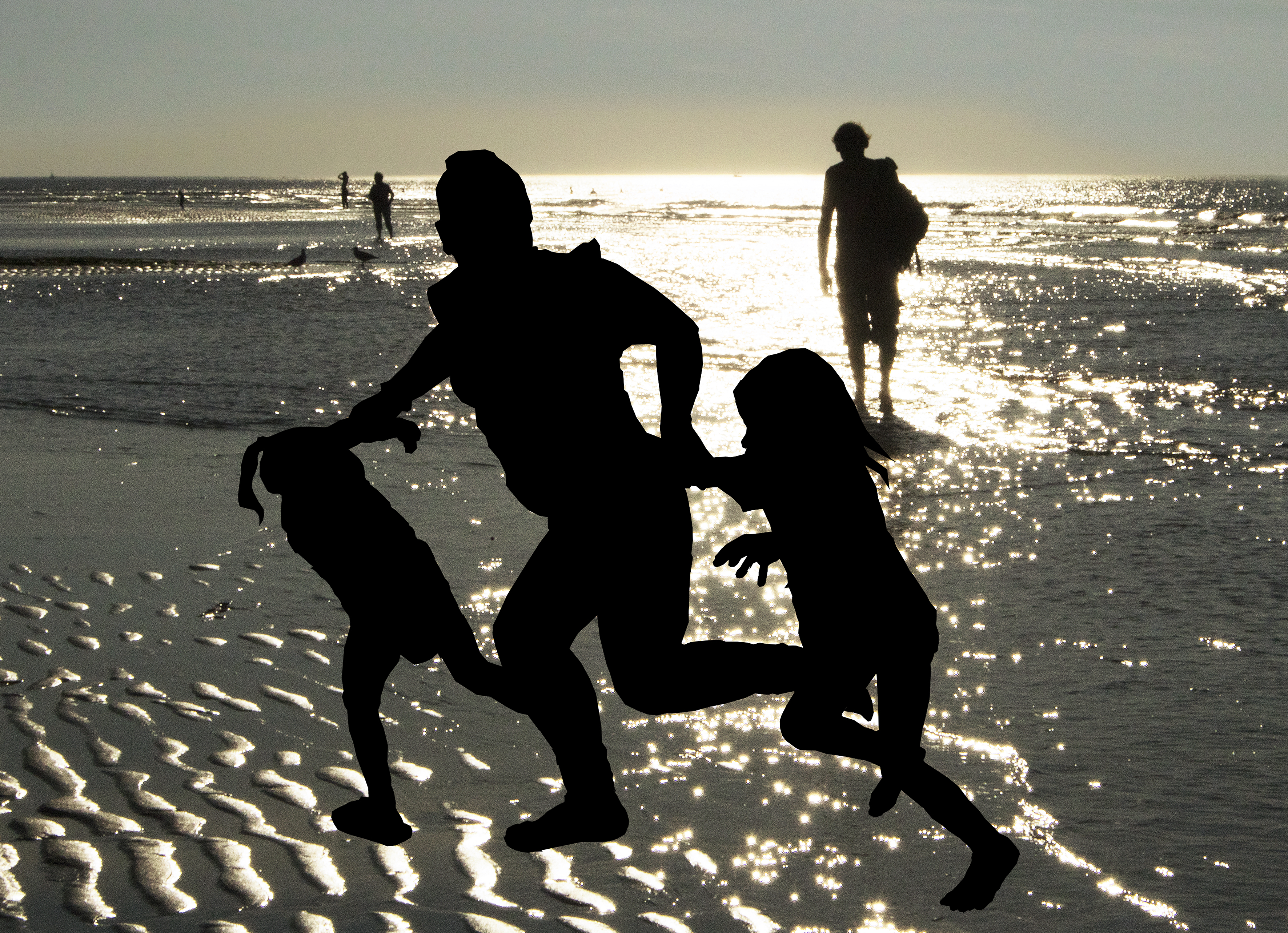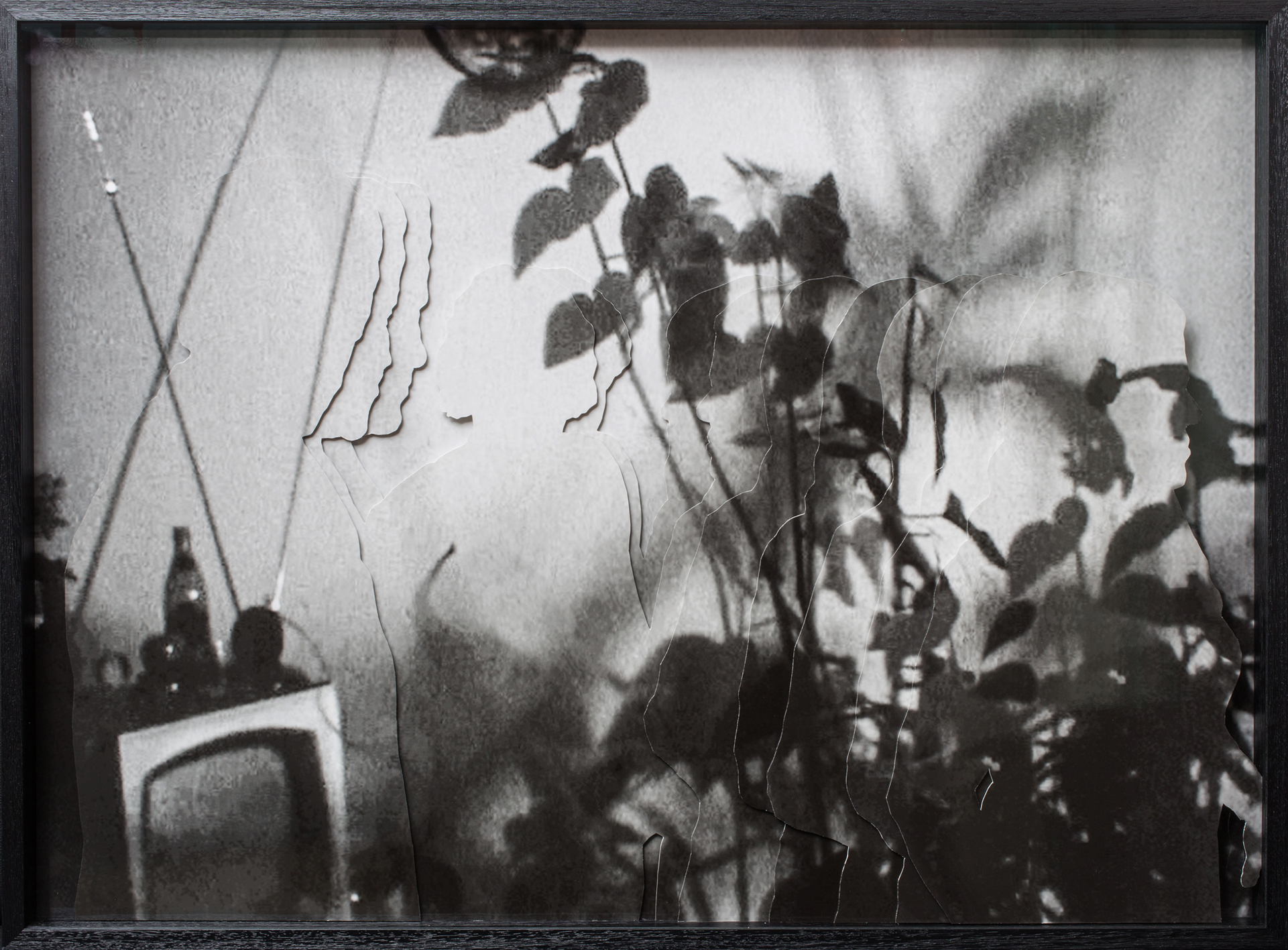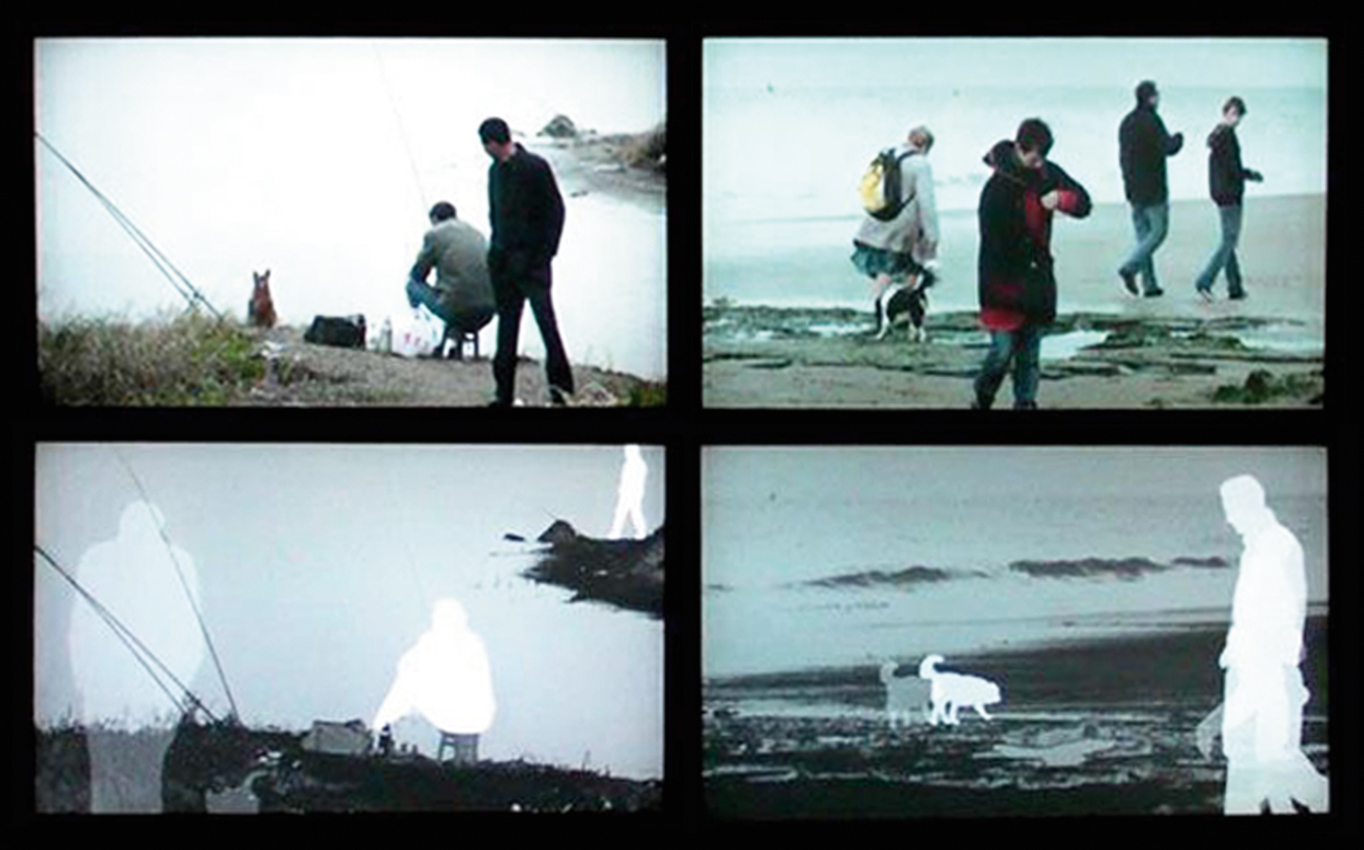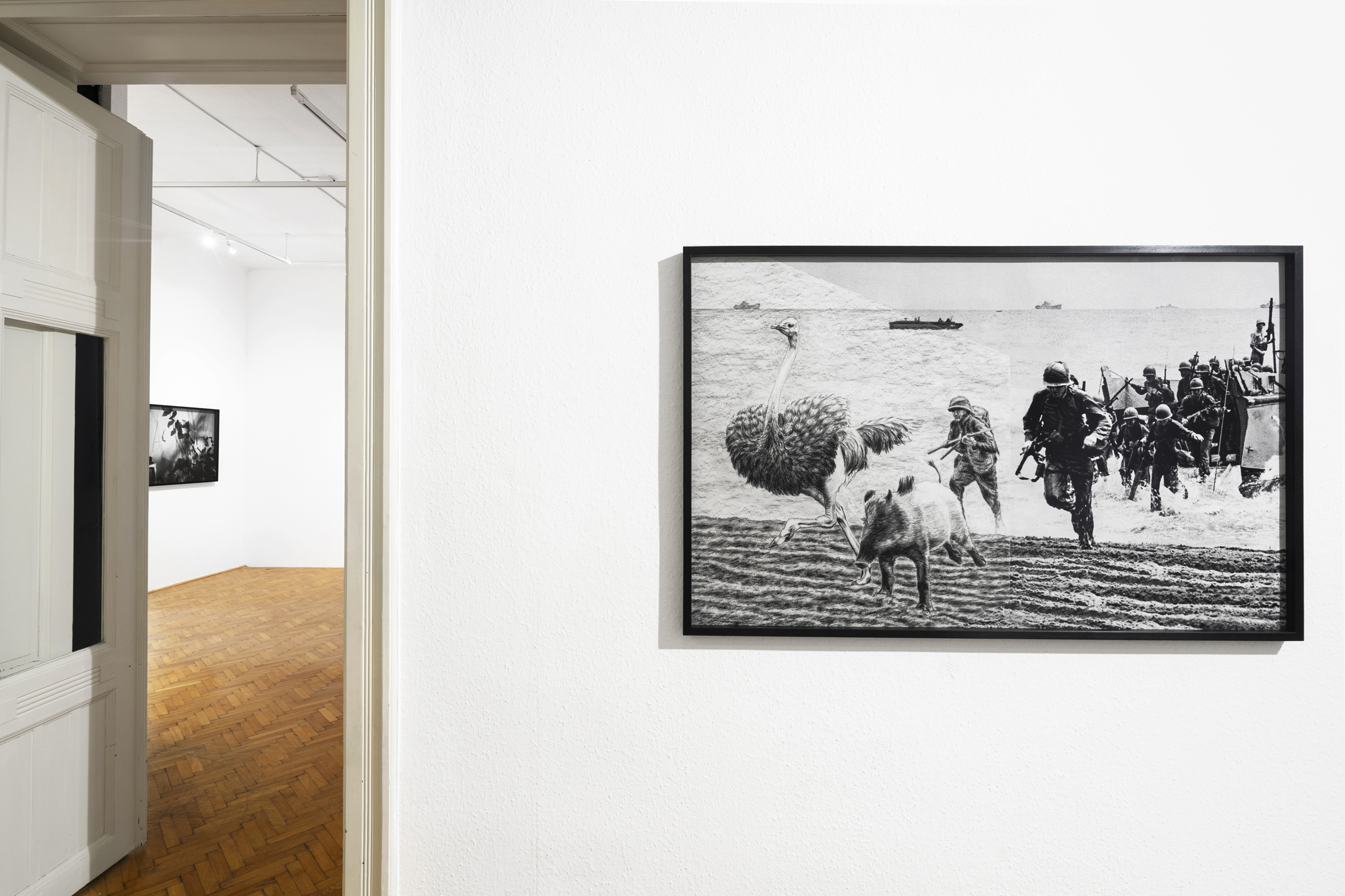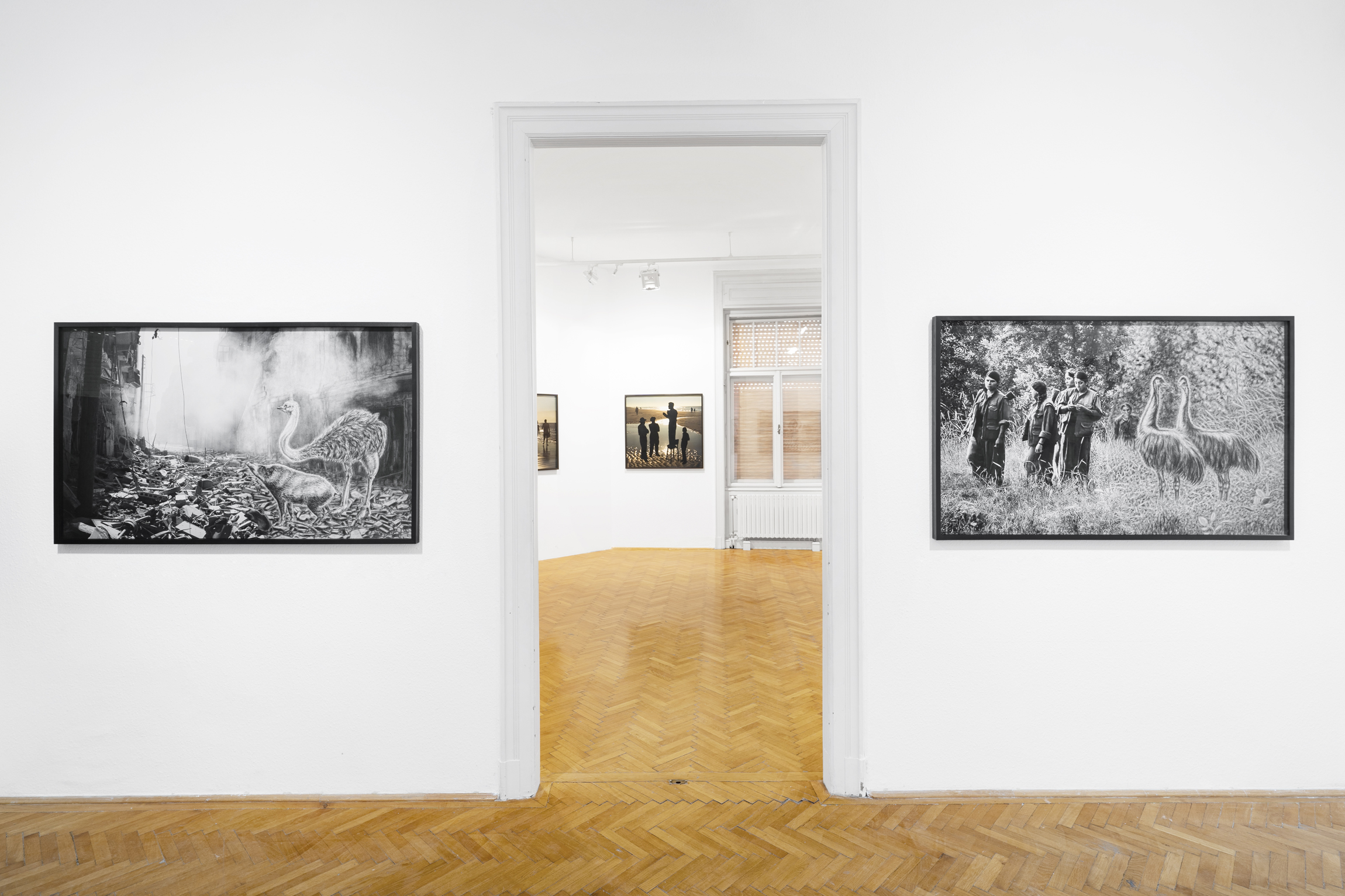Marianne Csáky: The Other Planet
2 June 2022 – 30 September 2022On 1st of Sempterber the exhibition will reopen until September 30th!
The Other Planet
Fantasy in three scenes
How will the generations coming after ours remember us – maybe already on another planet? What kind of historical and personal memories will we have in the future? Inventories of losses, or narratives of a victorious survival? Maybe both? During the long months of the Covid lockdown in Belgium, Marianne Csáky watched hundreds of hours of archive footage and thousands of documentary photographs of events, news and stories of the 20th and 21st centuries. It is hardly surprising that most of the news was about wars, custody and escape. Images in which masses of people – civilians or troops – appeared as thick war map arrows and colour spots, or as long lines of refugees carrying on their backs all that had remained of their lives before.
How will all this be remembered in a world from where the Earth’s history can be observed not solely from the point of view of humans but also of all living creatures, animals, plants, and even of rocks and of the entire eco-system? How will the feelings and memories of today’s people, their love stories or family histories be transmitted to those generations? Will they inherit our traumas, the consequences of all we did, still carrying them when the concrete faces and figures have long faded away and turned into silhouettes? Or will only the codes go down to them?
Three scenes – memories
The exhibition is composed of three groups of works. The first is a series of six works where Csáky combines her digital photo montages of archive and contemporary news footage and press photos with charcoal drawings. In the drawings, the animals participate in, suffer or observe the events documented in the montages. These animals are ostriches and emus, birds, which, due to their mesmerising archaic appearance, Csáky sees as archaic birds that best preserve the early ages of the animal world. The manipulated photos in which these magnificent birds appear are based on frames from newsreels in the British Pathé news archive’s WW II collection, on contemporaneous press releases, and also on media reports of the Syrian war and of Yazidi guerrilla women fighting against ISIS.
The six works in the second group are based on photos taken by Csáky at the Belgian coast of the North Sea, near Ostende, Blankenberge and Knokke, where the lights are so special in late September. The angles of the shore and the vector of setting sun create superb tones and contrasts that captured the artist’s imagination. She photographed the strong rays of the sunset in back-light, at an angle where the light source was not visible. In her imagination, the world of another planet emerged from the lights, where the sun rises only a little above the horizon, and perhaps cannot even be seen because of the atmospheric conditions. In the backlight, humans appear as black shapes, with only their silhouettes showing what they do. Each photo shows a major event in the 20th and 21st centuries in the form of embroidered black silk shapes: D-Day; German soldiers marching; flooring a solitary assailant of the White House; President Kennedy’s campaign speech; Mexican migrants trying to escape; Russian separatists in Ukraine. Each historical scene is in dialogue the with the figures in the photos.
The third group of works has emerged from fragments of personal histories, fading, resurfacing and then rewritten. Continuing her earlier practice, here Csáky used family photos and videos as their starting point. Deleting and rewriting works in two ways in these images: through remembering, she writes herself back into a story she has long not been part of, or she changes her memories in order to delete and rewrite the past. Most of the figures in these pictures are silhouettes cut out of the photo, stitched in silk, or a white patch in the video animation. The gestures of the human bodies and the way they arrange themselves in groups preserve and reflect the code that animates them.
BACK
